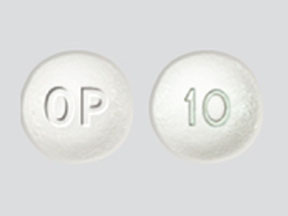
Oxycontin Coupons & Savings Card – Discount Prices from $126.06
Brand for: Oxycodone er
My prescription
Edit
10MG, Oxycodone ER (60 Tablet ER 12 Hour Abuse-Deterrents)
Select pharmacy

CVS
$126.06
COUPON PRICE
Walgreens
$153.07
COUPON PRICE
Albertsons
$222.44
COUPON PRICEOxycontin savings card
Show this card to your pharmacist
CVS
$126.06
BIN
ID
PCN
GRP
019876
LH6351574F
CHIPPO
LHX
Powered by
Related opioids prescriptions
More prescriptions for pain
Related opioids prescriptions
More prescriptions for pain
Price history for Oxycontin (brand) & Oxycodone ER (generic)
60 Tablet ER 12 Hour Abuse-Deterrents, 10MG
Average retail price for Oxycontin
Average retail price for Oxycodone ER
Average SaveHealth price for Oxycodone ER
Our price history data is based on aggregated prescription data collected from participating pharmacies in America. Our prescription data updates daily to reflect the latest price changes. If you notice a missing data point, it means there wasn't sufficient data available to generate a monetary value for that date.
Over the last 12 months, the average discount price of Oxycontin is $197.44 using the SaveHealth savings card. That's an average savings of 86.79% on Oxycontin with our discount card.
*Retail prices are based on pharmacy claims data, and may not be accurate when we don't have enough claims.
Oxycontin (Oxycodone ER) dosage forms
Dosage Quantity Price from Per unit 10MG 60 Tablet ER 12 Hour Abuse-Deterrents $126.06 $2.10 10MG 10 Tablet ER 12 Hour Abuse-Deterrents $28.55 $2.85 10MG 14 Tablet ER 12 Hour Abuse-Deterrents $43.16 $3.08 10MG 30 Tablet ER 12 Hour Abuse-Deterrents $72.03 $2.40 10MG 90 Tablet ER 12 Hour Abuse-Deterrents $180.09 $2.00 15MG 100 Tablet ER 12 Hour Abuse-Deterrents $410.31 $4.10 20MG 14 Tablet ER 12 Hour Abuse-Deterrents $105.51 $7.54 20MG 30 Tablet ER 12 Hour Abuse-Deterrents $231.78 $7.73 20MG 56 Tablet ER 12 Hour Abuse-Deterrents $417.06 $7.45 20MG 60 Tablet ER 12 Hour Abuse-Deterrents $445.56 $7.43
| Dosage | Quantity | Price from | Per unit |
|---|---|---|---|
| 10MG | 60 Tablet ER 12 Hour Abuse-Deterrents | $126.06 | $2.10 |
| 10MG | 10 Tablet ER 12 Hour Abuse-Deterrents | $28.55 | $2.85 |
| 10MG | 14 Tablet ER 12 Hour Abuse-Deterrents | $43.16 | $3.08 |
| 10MG | 30 Tablet ER 12 Hour Abuse-Deterrents | $72.03 | $2.40 |
| 10MG | 90 Tablet ER 12 Hour Abuse-Deterrents | $180.09 | $2.00 |
| 15MG | 100 Tablet ER 12 Hour Abuse-Deterrents | $410.31 | $4.10 |
| 20MG | 14 Tablet ER 12 Hour Abuse-Deterrents | $105.51 | $7.54 |
| 20MG | 30 Tablet ER 12 Hour Abuse-Deterrents | $231.78 | $7.73 |
| 20MG | 56 Tablet ER 12 Hour Abuse-Deterrents | $417.06 | $7.45 |
| 20MG | 60 Tablet ER 12 Hour Abuse-Deterrents | $445.56 | $7.43 |
| 20MG | 90 Tablet ER 12 Hour Abuse-Deterrents | $659.34 | $7.33 |
| 30MG | 100 Tablet ER 12 Hour Abuse-Deterrents | $716.62 | $7.17 |
| 40MG | 30 Tablet ER 12 Hour Abuse-Deterrents | $72.03 | $2.40 |
| 40MG | 56 Tablet ER 12 Hour Abuse-Deterrents | $118.86 | $2.12 |
| 40MG | 60 Tablet ER 12 Hour Abuse-Deterrents | $126.06 | $2.10 |
| 40MG | 90 Tablet ER 12 Hour Abuse-Deterrents | $180.09 | $2.00 |
| 40MG | 120 Tablet ER 12 Hour Abuse-Deterrents | $234.12 | $1.95 |
| 60MG | 100 Tablet ER 12 Hour Abuse-Deterrents | $1236.04 | $12.36 |
| 80MG | 30 Tablet ER 12 Hour Abuse-Deterrents | $429.26 | $14.31 |
| 80MG | 40 Tablet ER 12 Hour Abuse-Deterrents | $575.01 | $14.38 |
| 80MG | 60 Tablet ER 12 Hour Abuse-Deterrents | $866.52 | $14.44 |
| 80MG | 90 Tablet ER 12 Hour Abuse-Deterrents | $1303.78 | $14.49 |
| 80MG | 120 Tablet ER 12 Hour Abuse-Deterrents | $1741.04 | $14.51 |
Oxycontin Warnings
Oxycodone, a prescription opioid medication, carries several important safety considerations that must be adhered to in order to prevent serious health risks. Below is a comprehensive guide to its use, including risks, precautions, and emergency actions.
Risk of Abuse and Addiction: Oxycodone has a high potential for misuse and addiction, which can result in overdose and death. Patients should strictly follow the prescribed dosage and duration. Those with a personal or family history of substance use or mental health disorders should use caution and consult their healthcare provider.
Breathing Problems: This medication can cause severe, potentially fatal respiratory depression, particularly when treatment begins or doses are increased. The risk is heightened if taken with alcohol or other drugs causing drowsiness. Immediate medical attention is necessary if symptoms like slow or shallow breathing, severe drowsiness, or difficulty waking occur.
Overdose Prevention: To minimize the risk of overdose, take oxycodone exactly as prescribed. Keep it out of reach of children and pets to avoid accidental ingestion. In case of suspected overdose, seek emergency medical help promptly.
Interactions with Other Substances: Oxycodone may interact with other medications. Avoid combining it with alcohol or drugs that cause sleepiness. Always inform your healthcare provider about all medications you are taking to manage interactions effectively.
Special Populations:
- Pregnant Women: Use during pregnancy only if absolutely necessary, as it may increase the risk of birth defects, especially in the first trimester. Prolonged use can lead to neonatal withdrawal syndrome.
- Older Adults and Individuals with Pre-existing Conditions: Those who are older, frail, or have breathing conditions like COPD or asthma should use oxycodone with caution.
Potential Side Effects: Oxycodone can cause low blood pressure, adrenal hormone imbalances, and, in certain individuals, seizures. Report any unusual symptoms to your healthcare provider promptly.
Withdrawal and Dependence: Long-term use can lead to physical dependence. Gradually taper off the medication under medical supervision to avoid withdrawal symptoms such as anxiety and irritability.
Contraindications: Oxycodone should not be used in individuals with severe asthma, significant respiratory depression, stomach blockages, or those allergic to oxycodone.
Always store oxycodone securely to prevent misuse or theft. If you experience any severe side effects or have concerns about using this medication, contact your healthcare provider immediately.
Oxycontin Side Effects
When taking this medication, you might experience some common side effects, including nausea, vomiting, constipation, dry mouth, weakness, sweating, lightheadedness, dizziness, and drowsiness. These effects are generally mild and may subside as your body adjusts to the medication. To help manage constipation, consider increasing your dietary fiber intake, staying hydrated, and exercising regularly. A suitable laxative might also be beneficial; consult your pharmacist for advice. To minimize dizziness and lightheadedness, rise slowly from sitting or lying down positions. In some cases, you may notice an empty tablet shell in your stool, but this is harmless as the medicine has already been absorbed. While most individuals do not experience serious side effects, be alert for any significant symptoms such as interrupted breathing during sleep, mental or mood changes, severe stomach pain, difficulty urinating, or signs of adrenal gland issues like unusual tiredness or weight loss. These warrant prompt medical consultation. Rare but severe side effects require immediate medical attention. Look out for symptoms like fainting, seizures, slow or shallow breathing, severe drowsiness, or difficulty waking up. Allergic reactions, though infrequent, are serious; seek urgent care if you notice a rash, itching, swelling of the face, tongue, or throat, severe dizziness, or trouble breathing. Other reported side effects include stomach pain, chills, shortness of breath, rashes, and unusual dreams. In particular, dangerously slow breathing or signs of overdose, such as extreme sleepiness and cold, clammy skin, should be treated as emergencies. Additionally, symptoms of opioid withdrawal and severe allergic reactions, such as hives and chest tightness, need urgent medical attention. Always consult your healthcare provider if you have concerns about side effects.
Oxycontin Interactions
It is important to be aware of potential interactions when taking this medication. Certain pain medications, specifically mixed opioid agonist/antagonists like Butorphanol, Nalbuphine, and pentazocine, as well as Naltrexone and samidorphan, may interact with this drug. Using this medication with other substances that cause drowsiness or breathing issues can increase the risk of serious side effects, such as slow or shallow breathing, and severe drowsiness or dizziness. Inform your doctor or pharmacist if you are using other opioid pain or cough relievers like codeine or Hydrocodone, alcohol, marijuana, sleep or anxiety medications such as Alprazolam, Lorazepam, or Zolpidem, muscle relaxants like Carisoprodol or Cyclobenzaprine, or antihistamines such as Cetirizine or diphenhydramine.
Check all your medication labels (including allergy or cough-and-cold products) for ingredients that might cause drowsiness, and consult your pharmacist on the safe use of these products. Additionally, some medications can alter how oxycodone is processed in your body, potentially affecting its effectiveness. This includes azole antifungals like Ketoconazole, macrolide antibiotics such as Erythromycin, Mifepristone, certain HIV medications including tipranavir, rifamycins like Rifabutin or Rifampin, Ritonavir, and drugs for seizures such as Carbamazepine or Phenytoin.
This medication may also interfere with specific lab tests, such as those for amylase/lipase levels, potentially causing inaccurate results. Ensure that lab personnel and all your healthcare providers are aware of your medication use.
What's the difference between OxyContin and oxycodone?
OxyContin and oxycodone are both medications that contain the active ingredient oxycodone, which is an opioid used to manage pain. The primary difference between the two is their formulation and release mechanism. Oxycodone is available in immediate-release formulations, which means it is designed to be released into the bloodstream quickly for fast pain relief. OxyContin, on the other hand, is a brand name for an extended-release formulation of oxycodone, which is designed to release the medication slowly over a longer period to provide sustained pain control.
What is another name for OxyContin?
Another name for OxyContin is oxycodone hydrochloride extended-release.
Do OxyContin and oxycodone contain the same drug?
Yes, both OxyContin and oxycodone contain the same active ingredient, which is oxycodone. However, OxyContin is a brand name for a specific formulation of oxycodone that is designed to release the medication over an extended period, while oxycodone can also be available in immediate-release forms.
